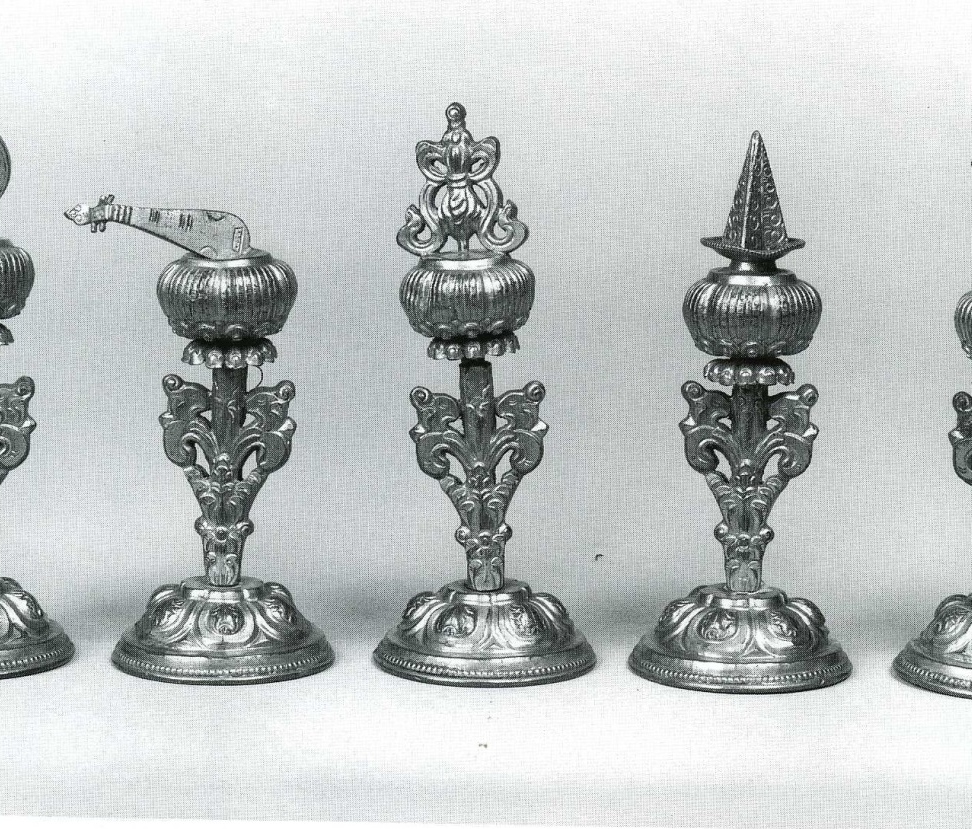
The Rubin Museum’s Tibetan Buddhist Shrine Room has been open to the public since 2010, when it debuted as part of our Gateway to Himalayan Art exhibition. Attracting a passionate fan base ever since its unveiling, the Shrine Room encompasses over 130 objects that represent the devotional and ritual objects usually found in Buddhist households throughout Tibet.
Earlier this month, the Rubin Museum launched its Find Your Focus Crowdfunding Campaign to help raise funds for the expansion of the Shrine Room. With patron support, the Shrine Room will re-open to the public this fall in a newly designed space that will allow for more visitors to engage with its immersive environment. Here are some of the kinds of ritual objects that you will find in the installation once it re-opens as part of our new Sacred Spaces exhibition on October 23, 2015:
1.Incense Vessels: Portable incense vessels are usually used in pairs, and whether they hold burning incense or are used merely symbolically, they represent purification. They are used in ceremonial processions, prior to a ritual, or to welcome someone.

2. Stupas: Stupas were originally burial mounds housing relics of the Buddha. They symbolize the “mind of the buddha,” or dharmakaya, which is attained at complete enlightenment.

3. Offerings: These five objects represent symbolic offerings that gratify the five senses: a mirror is the offering to sight, a lute is the offering to hearing, perfume is the offering to sense of smell, a ritual cake (torma) is the offering to taste, and a scarf is the offering to touch. The highest offering to the sixth sense, or the mind, is said to be formless and refers to the understanding of ultimate reality.

4. Hand drums: the hand drum is an implement used in tantric practices, in which two halves symbolize the oneness of the two aspects of enlightenment. Its drumming is the sound of the bliss of realizing the true nature of reality. Large hand drums are also used in the Tibetan practice of “cutting the ego.” Their sound represents impermanence.

5. Conch Shells: Conch shells are considered auspicious by Tibetan Buddhists, and they’re used to make prayer beads, water containers used during rituals, and wind instruments, like this trumpet. The sound from a conch shell horn is considered an offering and symbolizes the voice of the Buddha or his teachings (dharma).

6. Butter lamps: Butter lamps are an essential element in the offering practices of Tibetan Buddhism and represent the offering of light to enlightened beings. Butter lamps are called “the Dharma light” (Tibetan: chome) and can be of various sizes.

Ready to see these objects in our expanded Shrine Room? Join the Find Your Focus Crowdfunding Campaign! Your support will help us preserve and transport ancient works of art to build the new shrine room and make it an unforgettable space.
Add Your Thoughts
Comments are moderated, and will not appear on this site until the Rubin has approved them.

